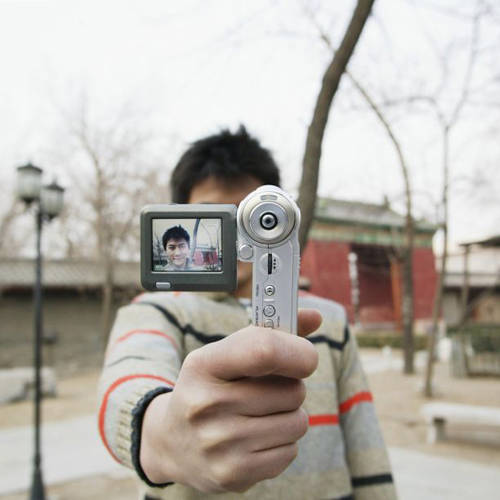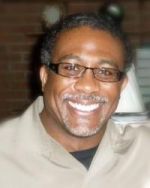Bryan Carter, a UA assistant professor of Africana studies, is among faculty members in the arts and humanities more readily employing consumer-based technologies in educational, creative, interdisciplinary and engaging ways.
Take a guess – what are the most common uses for devices like smartphones?
Earlier this year, the UK-based mobile network O2 reported that, on average, people use their smartphones to access the Internet, communicate via social media and listen to music. Other popular uses, as explained by an article in The Telegraph, include playing games and making phone calls.
But faculty members like the University of Arizona’s Bryan Carter in the College of Humanities are incorporating teachings that advance the use of such devices beyond their conventional, consumer-based activities to improve student engagement and also retention.
“People tend to look at these devices as devices for consumption,” said Carter, UA assistant professor of Africana studies, who uses popular and contemporary novels in his course, being taught online this semester.
“But they are creative devices, and they allow you to take that creativity and apply it to understandings – in this case, literature,” Carter said. “It’s about making meaningful use of these devices beyond checking email and surfing the Web.”

Moving away from traditional classroom methods, UA faculty members in the College of Humanities like Bryan Carter are advancing the digital humanities. Image credit: University of Arizona
Opting for non-conventional, creative activities meant to both educate and engage students in ways not before seen, Carter’s students use their iPhones, iPads and other smart devices – some also share and borrow them from the UA Libraries – to produce mini-lectures and conversations about course materials.
Carter joins several other faculty members in the arts and humanities who have adopted principles to advance research and practical applications of the digital humanities. This represents an advancement in humanities by way of the digital humanities, a relatively new development within the discipline that emphasizes the use of digitally-based or digitized materials for teaching and research.
UA faculty members who have adopted practices in the digital humanities vary and include:
- UA English professor Ken McAllister, who has recently studied the proliferation of memes, investigates the history and use of technology and computer culture, among other things.
- Malcolm Alan Compitello, head of the UA’s Spanish and Portuguese department, has developed an extensive Second Life, a popular Web-based virtual community, and uses the space to teach his students and engage them in research.
- Jonathon Reinhardt, an assistant professor of English, uses mutli-player digital games to teach linguistics and English as a second language.
Carter emphasizes the use of advanced visualization and relies on augmented reality technology, like the Aurasma application and VoiceThreads, enabling students to interface anywhere at anytime. Students also are more readily able to take a more active role in their own education, he added.
For example, a student may point his or her iPhone to the course syllabus and a brief lecture will begin playing on their device. Students can then share their responses in a Web-mediated format, either with Carter directly or with the entire class.
“I am concerned with how digital tools can help this generation of students understand concepts in literacy differently,” he said, adding that students also are learning important skills that are transferable to other venues, such as research presentations or working on a job.
Symone Gittens said she was attracted to Carter’s course because of the content and focus on African American literature, but also because of its technological interface.
“The fact we get to chat with him and the rest of the class in real time also makes the class very engaging because it allows me to have the chance to get to have all of my questions answered, hear what others have to say and have the opportunity to express my opinion on the various topics that we go over even if we are in different parts of the world,” said Gittens, a pre–retailing and consumer sciences sophomore.
Gittens said the course has shifted her beliefs about online courses. She previously thought online courses were not the best fit based on her learning style, but she thinks differently after taking Carter’s course.
“I learned that even though this class is online, I still feel like my teacher knows who I am, I’m not just some name on the computer screen,” Gittens said. “I love this class because every time I participate in one of the lectures I feel like I left with a little more knowledge than what I came in with, and I have a better understanding of what the author was trying to say through their writings.”
Like Gittens, Jeremy Patrick Gesuale, another student in Carter’s class, also chose the course to gain a deeper understanding of African American literature and culture and because of the tech-heavy emphasis.
“Being a child who was born in the early 1980’s, my generation has witnessed the greatest progression of technological advancement in human history,” Gesuale, a UA graduate student studying history said, noting the shifts from cable television to digital formats in a short period of time.
“Technology and the convenience of technology has taken over our lives, so much so that it is almost impossible to keep up with all these advancements because so many are at our fingertips presently,” said Gesuale, who intends to pursue a career in sports journalism.

The digital humanities involves the intentional incoroporation of digital means and sources to teach and conduct research. in ways that promote interaction, non-traditional modes of communicating and, at times, student retention. Image credit: University of Arizona
The use of technology is an important interface to use for interpreting human interactions within and across culture, Gesuale said.
“What Dr. Carter has provided to the students in his classes is the opportunity to be exposed to these new mediums and in part have the ability to realize how simply these programs can be utilized for not only our own class but for future purposes as well,” Gesuale said, adding that the move from a traditional lecture format has been especially informative.
“This is one of the most entertaining courses I have taken in my long college career,” Gesuale said. “The future of learning and course-taking is now boundless in my opinion and those boundaries will only continue to accelerate as time progresses. It should be very interesting to witness what type of University setting my children one day will be witnessing, because this is only the beginning.”
– By La Monica Everett-Haynes
*Source: The University of Arizona

